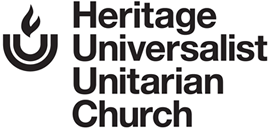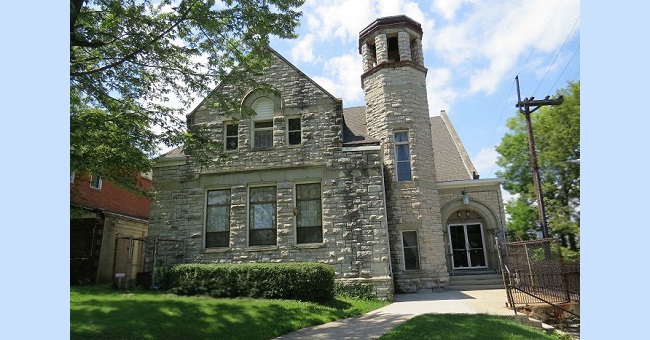by Mike Roberts, Church Historian
Post-war World War II America presented challenges to every part of American society, and its religious institutions were not spared. The country entered a period of a booming economy, a cold war conducted under the threat of nuclear disaster, a reshaping of its urban environments, and embryonic movements to obtain equality for racial and ethnic minorities. Reverend Kenneth Hutchinson had served the First Universalist Society of Cincinnati from a week after Pearl Harbor until January 31, 1944 when he resigned to take the pastorate in Brattleboro, Vermont.
Reverend George Thorburn was selected by the First Society as the replacement for Kenneth Hutchinson. He assumed his position as minister in February of 1944. Thorburn had been living in Arlington, Virginia while working for the Universalist Institute for International Relations in Washington, D.C.
Thorburn was the son of George Thorburn, Sr., and Abagail Loham. His father was a freight agent and railroad inspector and served in the Massachusetts House of Representatives. George was born on January 6, 1904 in Marblehead, Massachusetts. After high school, he graduated from Tufts Theological College and then attended Union Theological Seminary from which he was ordained in 1927. It is known that he served churches in Saco-Biddleford, Maine and Middletown, New York. He also served as President of the New York State Sunday School Association, was chairman of the Rhode Island Universalist Convention, and Dean of the Community Teacher Training School of New York.
Reverend Thorburn faced a number of challenges when he took the pulpit. His first year was marked by the conclusion of World War II. The rest of his tenure saw the church struggle to cope with the new world order that resulted from the devastation of the war and the social upheaval that accompanied it.
Thorburn saw a critical need to increase the membership of the church. He also felt it imperative that active and not passive participation of those associated with the church was necessary to improve the church’s health. Thorburn saw the answer as strict adherence to a Five Year Plan generated by Robert Cummins, the head of the Universalist Church of America. Cummins had served as minister of the First Universalist Society of Cincinnati from 1926 to 1932. This vision included:
1) “Rededication to the Moral, Ethical, and Spiritual Tenets of Our Faith”;
2) “Enlistment Through the Whole Life of the Church” which included missionary work and recruitment of new members;
3) Stewardship in support of the church budget and Fair Share contributions to the United Appeal;
4) Outreach which was defined as moving away from the Walnut Hills church site; and
5) “A Crusade Toward Understanding Universalism.”
By 1947, Thorburn was expressing dismay that the church had accomplished little in trying to make this vision a reality. He published a letter to the church that challenged the commitment of all those associated with the church and especially scolded the lack of support for leaving the Essex Street building. America was moving to the suburbs and he felt the church needed to follow that path. Unfortunately, he never lived to see the fruition of his dreams. Thorburn became seriously ill and passed away suddenly on June 25, 1949 at the age of 45. While mention is made in church documents of his poor health his death must have been somewhat unexpected. At a Board of Trustees meeting shortly before his death, he outlined his future plans for the rest of 1949. He is the only minister of the First Society who died while serving the church.
Thorburn was married to Catherine Margedant of Hamilton, Ohio. Both he and his wife were descendants of founding fathers of the Universalist Church. Together they had one child, George III. Reverend Thorburn is buried in the Margedant family plot in Greenwood Cemetery, Hamilton, Ohio.
Image: Essex Street church building in Walnut Hills, home of the First Universalist Society of Cincinnati during Rev. Thorburn’s tenure.
Image courtesy of Mike Roberts. Photographed in 2016.

